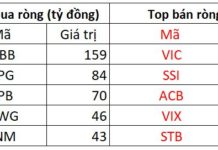Vietnam has solidified its position as a formidable furniture manufacturing hub in the global furniture industry, currently ranking second worldwide in furniture exports, just behind China. Amid the rapid development and fierce competition in the global furniture market, projected to reach over $780 billion by 2030, creating distinctive brand differentiation has become increasingly crucial.

Numerous design companies have been pioneering the application of Douglas Fir and Western Red Cedar from Canada into their production processes. These species are among the most prevalent trees in Western Canada, particularly in British Columbia (B.C.), renowned for their durability, design flexibility, and economic value, akin to common hardwood species in Vietnam.
“Due to the versatility of Canadian wood in terms of species, dimensions, and grades, manufacturers often achieve the desired aesthetics and cost balance at a lower price than the current market value,” shared Mr. Vince Tran, Country Director of Canadian Wood Vietnam. Canadian Wood Vietnam, a government-supported organization based in Binh Duong, directly assists manufacturers interested in learning about Canadian wood and its potential.
While the tree species in British Columbia may not possess the same hardness as the commonly used trees in Vietnam, they still meet various application demands due to their high strength-to-weight ratio, excellent workability, and lightweight characteristics, benefiting manufacturers aiming to export lighter and more flexible products. The lower density of British Columbia’s tree species can also be advantageous, allowing manufacturers to create larger wood pieces with reduced weight compared to traditional hardwoods.
Douglas Fir and Western Red Cedar excel in performance, durability, workability, and overall aesthetics. In terms of hardness, both species rival the likes of Teak, a popular tropical hardwood often cultivated in monoculture plantations across Africa, Asia, and Latin America. In contrast, Douglas Fir and Western Red Cedar are sourced from natural, biodiverse forests on public land in Canada, adhering to stringent laws and environmental regulations that enforce continuous forest conservation and regeneration measures.
Mr. Vince emphasized Canada’s world-renowned sustainable forest management and certification, ensuring legal and environmentally friendly wood products that cater to the growing consumer demand for environmentally responsible choices.
Characteristics of Douglas Fir
There are two types of Douglas Fir – coastal and mountain. The coastal variety boasts a much larger tree size than its mountain counterpart. Wood from the coastal region tends to be lighter in color and exhibits more uniform grain patterns compared to its mountain-grown counterpart.
“Douglas Fir possesses a unique appearance, color, and fine grain that no other softwood can match – this species exudes sophistication and richness, appealing to discerning consumers,” Mr. Vince explained. Douglas Fir is remarkable for its strength and highly regarded for its workability, showcasing excellent machine-working characteristics. The wood dries quickly, minimizing size changes and reducing the tendency to split.

Douglas Fir demonstrates exceptional workability, making it suitable for a variety of furniture pieces with a flawless finish.
The Superiority of Western Red Cedar
To illustrate the superiority of Western Red Cedar, Canadian Wood Vietnam provided opportunities for leading furniture designers and local manufacturers to explore and unleash the unique characteristics of this species.
Softer and easier to saw, plane, and sand than traditional hardwoods, Canadian softwoods, notably Western Red Cedar, can expedite production and reduce equipment wear and tear. Craftsmen can attain diverse finish options comparable to hardwoods, including a silky smooth finish.
Western Red Cedar is also well-suited for molding and crafting furniture pieces. From front doors to back doors and furniture items like flooring, hanging ceilings, stairs, and other high-quality applications, Western Red Cedar excels.

Benefits of the “Try Canadian Wood” Program
Furniture manufacturers and craftspeople unfamiliar with Canadian wood species and curious about the applications of these sustainable wood types can explore the “Try Canadian Wood” program.

“Try Canadian Wood” offers small quantities of wood for experimental purposes, allowing manufacturers to grasp the unique characteristics and workability of Canadian softwoods. “Canadian Wood closely collaborates with Vietnamese manufacturers to understand their design, color, and aesthetic standards. Subsequently, we guide their craftspeople on the technical considerations of using Canadian wood as a cost-effective alternative to the expensive or scarce wood species they typically employ,” shared Mr. Vince Tran.
“We can even guide them in creating trial versions for use as prototypes to facilitate direct comparisons with other hardwoods. This is a fantastic opportunity to leverage,” he added. Get in touch with Canadian Wood Vietnam at:
Website: canadianwood.com.vn
Email: [email protected] | Hotline: +84 274 380 3609





































